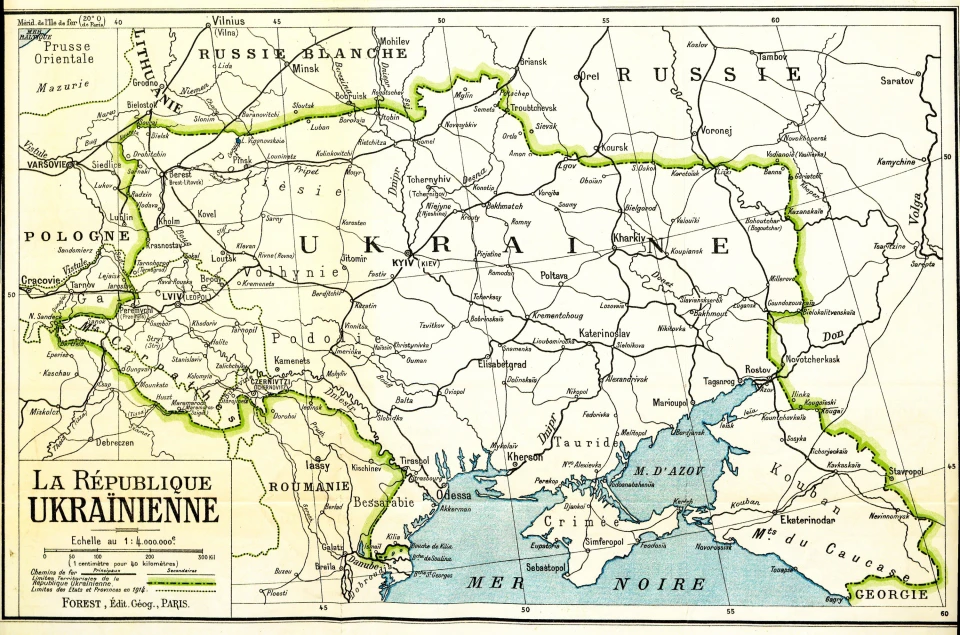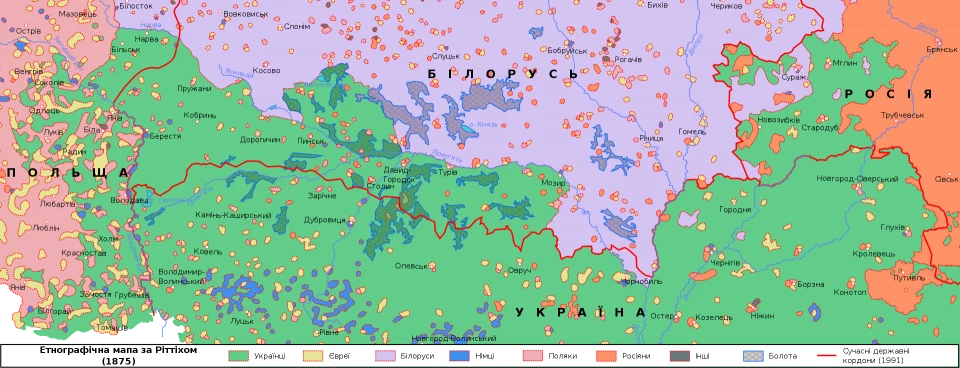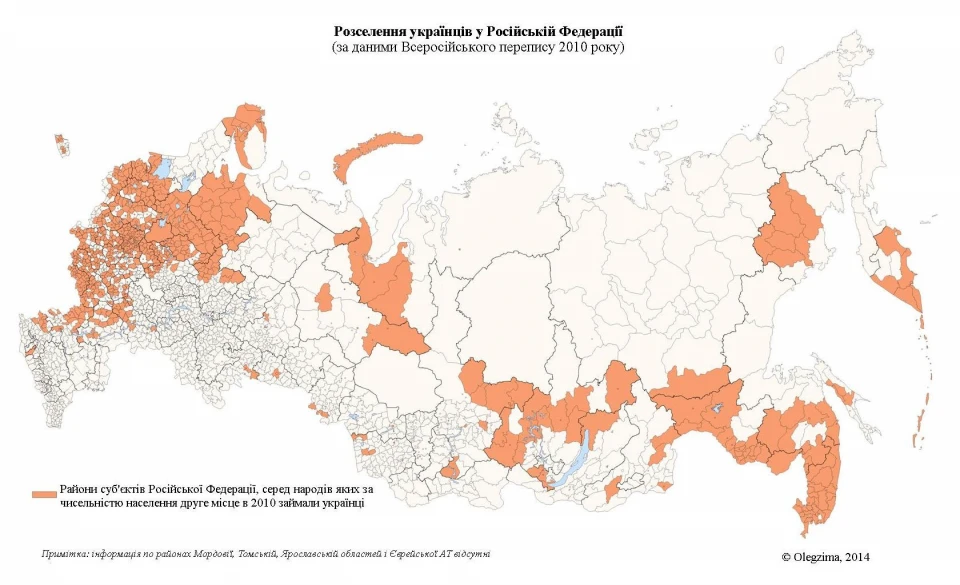
Kuban, Slobozhanshchyna, Starodubshchyna: historical Ukrainian lands on Russia's territory
Putin actually built his entire war propaganda on the theme of "primordially Russian" territories and the alleged artificiality of the Ukrainian nation. For the sake of fairness, it is important to recall that until a certain time, Ukraine occupied much more territory
On the Ukrainian Unity Day, Volodymyr Zelenskyy signed a decree on historical Ukrainian lands in Russia. It concerns almost the entire area of the Russian Federation bordering Ukraine and the preservation of Ukrainian identity there. Espreso will tell you more about these lands.
Why Kuban is historically Ukrainian territory?
Today, it is the territory of the Krasnodar and Stavropol territories, Adygea, Rostov region, and Karachay-Cherkessia of the Russian Federation.
Kuban has historically been Ukrainian territory because it has been inhabited by Ukrainians, in particular Zaporizhzhia Cossacks, since the late 18th century. The Kuban Cossacks were part of the Black Sea Cossack Army, which recognized itself as the defender of the Ukrainian nation and culture.
In 1918, the Kuban People's Republic declared its independence from Russia and joined the Ukrainian People's Republic on federal terms.

However, after the Revolution and Civil War, Kuban was occupied and annexed by the Bolsheviks, who implemented a policy of Russification, collectivization, and genocide against the Ukrainian population.
Although, Kuban is part of the Russian Federation, Ukrainian identity and culture are still present there.
The 1926 census confirmed that Ukrainians dominated the population of the Kuban district, accounting for 67.5%. Most of them lived in villages at the time, where it was easier to preserve their identity.
Until recently, people in Kuban loved to sing Ukrainian folk songs, especially about the Cossacks, and spoke Ukrainian. Only the Russians, as always, were terrified to admit this fact and pejoratively called the Ukrainian language "Kuban chatter."
An example of how Kubans speak can be seen in the video.
Below this video, many commenters confirm that their parents and grandparents still talk like this, sometimes better, sometimes worse. And this phenomenon exists in all regions bordering Ukraine.
Interestingly, after Russia's attack on Ukraine in 2014, the Kuban People's Republic initiative appeared, which, in the best traditions of Kubans, called for federalization and exposed Moscow's deceitful policies. Of course, the members of this movement were subjected to repression.
The northernmost ethnic Ukrainian land - Starodubshchyna
It is the northernmost territory of Ukrainian ethnic lands. Now it is part of the Bryansk region of the Russian Federation (about 40%). At one time, this land was controlled by Lithuania and Poland, and since Bohdan Khmelnytskyi's (military commander of Ukrainian Cossacks - ed.) time it has been part of Russia. During the uprising led by Khmelnytskyi, Ukrainian Cossacks occupied Starodubshchyna. Since 1663, the Starodubsk Cossack Regiment has existed here.

Ethnographic map according to Rittich (1875)
green - Ukrainians
yellow - Jews
purple - Belarusians
blue - Germans
pink - Poles
orange - Russians
In 1918, Starodubshchyna was a part of the Ukrainian state formations. Under the terms of the Brest Peace of 1918, it became part of the Ukrainian People's Republic (UPR). By signing the Brest Peace, the Russian Socialist Federative Soviet Republic recognized the UPR and its borders. It also officially recognized the Ukrainian state of Hetman Pavlo Skoropadskyi, to which Starodubsk was not denied belonging. By the way, the hetman was from there. At the end of 1918, the Bolsheviks occupied this region and began a terrorizing campaign against the Ukrainian people.
According to 2002 data, Ukrainians were the second largest ethnic group in the Bryansk region. However, it is worth remembering that Russia deliberately downplays both the number and importance of Ukrainian ethnic groups in its territories.
Slobozhanshchyna - the land of Zaporozhian Cossacks
Northern and Eastern Slobozhanshchyna or Sloboda Ukraine are ethnic Ukrainian lands that are now located within the Kursk, Belgorod, and Voronezh regions of the Russian Federation. They were colonized by Ukrainians in the seventeenth century, when the Zaporozhian Cossacks fled Polish rule and established free settlements on the border with Muscovy. These settlements were called slobodas, and their inhabitants were called Slobozhans. Slobozhanshchyna was an important region of Cossack Ukraine that participated in the national liberation struggle against Poland, Muscovy, and the Ottoman Empire.
In 1917, after the revolution, the Ukrainian People's Republic proclaimed Northern and Eastern Slobozhanshchyna its territory and held the Ukrainian Constituent Assembly there. However, after the Civil War, these lands were seized by the Bolsheviks and incorporated into the Russian Soviet Federative Socialist Republic. During the Soviet era, the Ukrainian language, culture, and identity in these lands were suppressed and Russified.
Today, Northern and Eastern Slobozhanshchyna remain historically inhabited by Ukrainians.

Map of the settlement of Ukrainians in the Russian Federation (according to the 2010 census). Orange color indicates regions where Ukrainians are the second largest group of the population
For example, in 2010, a delegation from the Ukrainian World Coordinating Council visited Eastern Slobozhanshchyna (the delegation included the famous Ukrainian poet Dmytro Pavlychko). A report about this trip was published in the Ukraina Moloda publication. Here is an excerpt:
"In the evening, we arrive in what is now the largest city in Eastern Slobozhanshchyna, about which Oleksandr Dovzhenko once said that 'you will hear Ukrainian more often in Rossosh than in Kyiv. The city of Rossosh is known for its annual festival of Sloboda Ukrainian culture...Mr. Babeshko says that after the construction of a chemical plant in the city, the number of Russians here has increased many times over. "Nowadays, officials often tell me at the visit: we are ready to listen to you as a representative of the Ukrainian diaspora... What diaspora? This is my grandparents' homeland!" says Mr. Babeshko. - "But the central government does not trust us, considers us a 'fifth column' and appoints only non-local Russians to senior positions, especially in law enforcement agencies."
Representatives of the Ukrainian community in Rossosha claim that during the last census, most Ukrainians in the south of the region were not ashamed to indicate their nationality, unlike residents of Voronezh. Because they feel like they are on their native land."
"Restoration of historical justice"
On the Ukrainian Unity Day, January 22, President Volodymyr Zelenskyy signed a decree "On the Territories of the Russian Federation Historically Inhabited by Ukrainians."
The document decides to submit for consideration an action plan to preserve the national identity of Ukrainians in the Russian Federation, including in the lands historically inhabited by them. These are the Kuban, Starodubshchyna, Northern and Eastern Slobozhanshchyna within the present-day Krasnodar Krai, Belgorod, Bryansk, Voronezh, Kursk, and Rostov regions of the Russian Federation.
The decree foresees, in particular:
- addressing the issue of collecting and studying facts and evidence of crimes committed against Ukrainians residing (or previously residing) in the territories of Russia, historically inhabited by ethnic Ukrainians, regarding policies of forced Russification, political repression, and deportations against Ukrainians, restoration and preservation of historical memory, including the establishment of a centre on these matters;
- intensifying efforts to counter disinformation and propaganda by the Russian Federation concerning the history and the current situation of Ukrainians in Russia and all the nations enslaved by it, involving domestic and foreign scholars, experts, and representatives of the Ukrainian diaspora in the preparation and implementation of events aimed at debunking Russian myths about Ukraine;
- developing cooperation between Ukrainians and nations oppressed by Russia;
- ensuring, in collaboration with the National Academy of Sciences of Ukraine, the preparation and dissemination of materials in Ukraine and globally on the more than thousand-year history of Ukrainian statehood, historical ties to lands populated by ethnic Ukrainians, and Ukrainian national state entities in different historical periods;
- incorporating the true history of ethnic Ukrainians in lands historically inhabited by them within the Russian Federation into educational curricula and textbooks for educational institutions.
- News













































